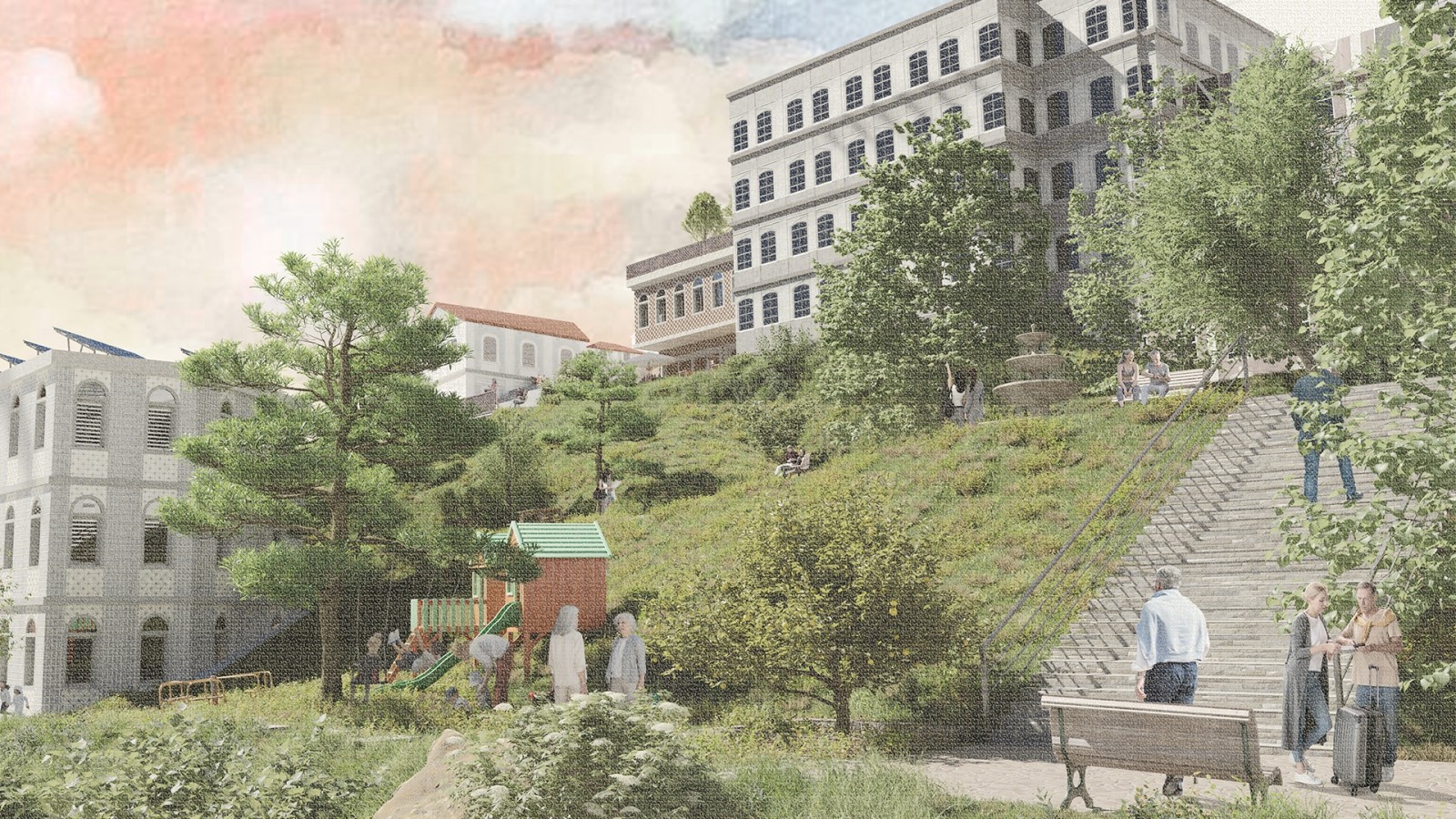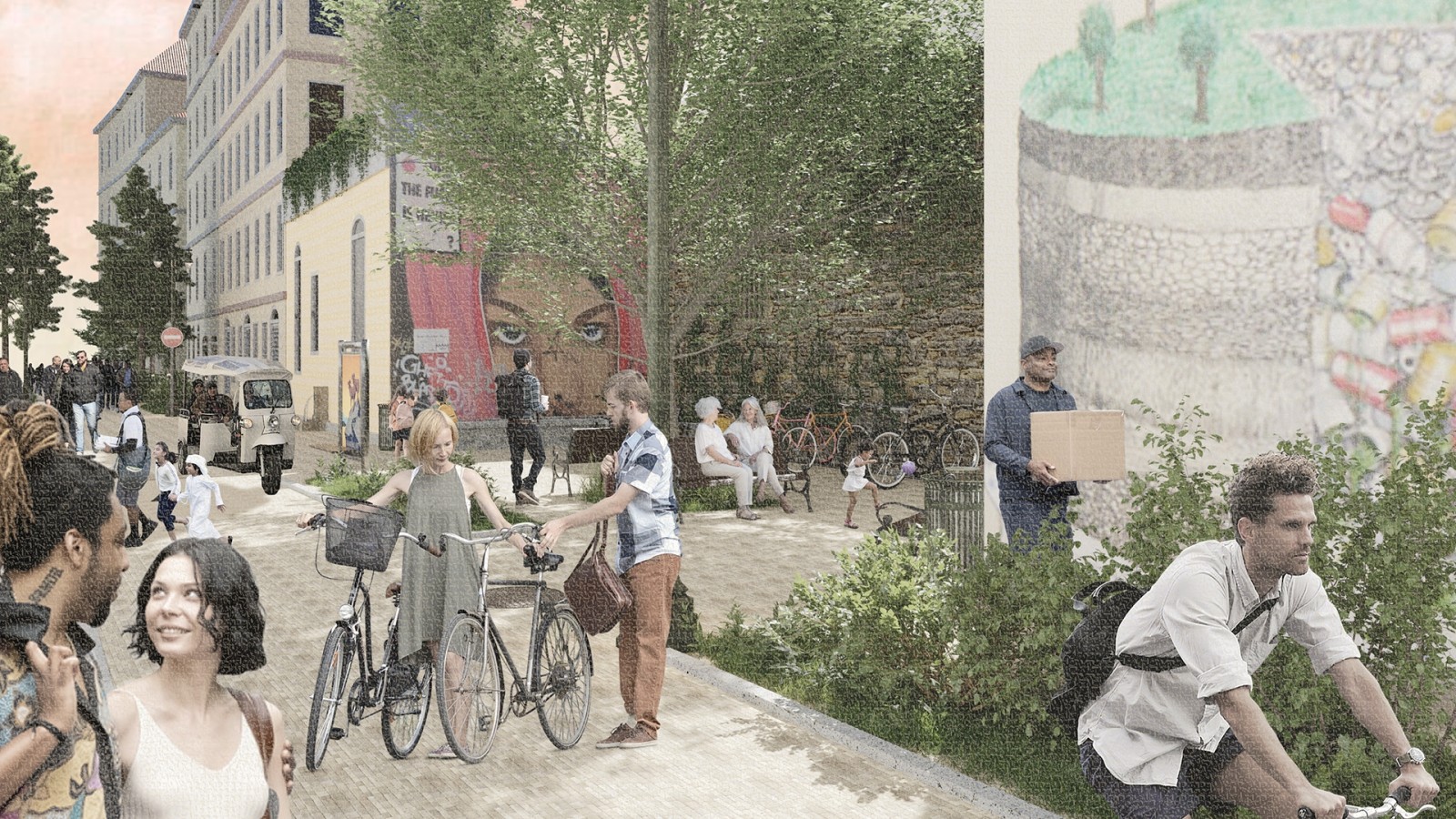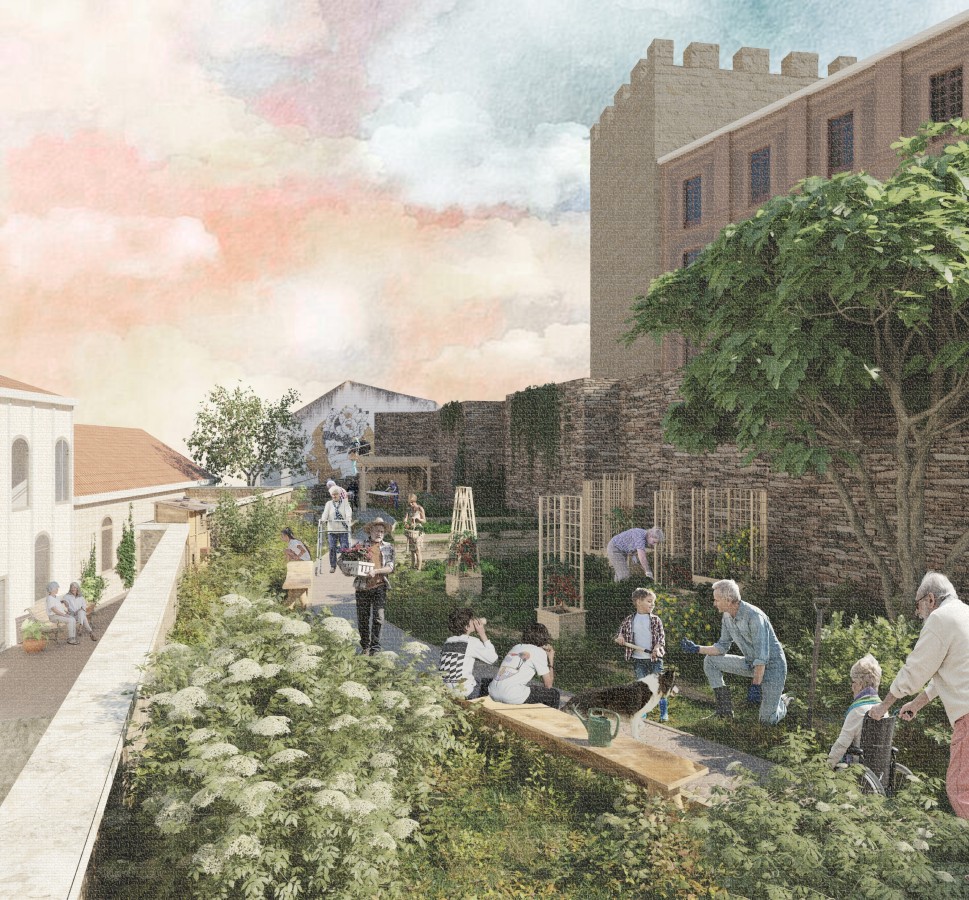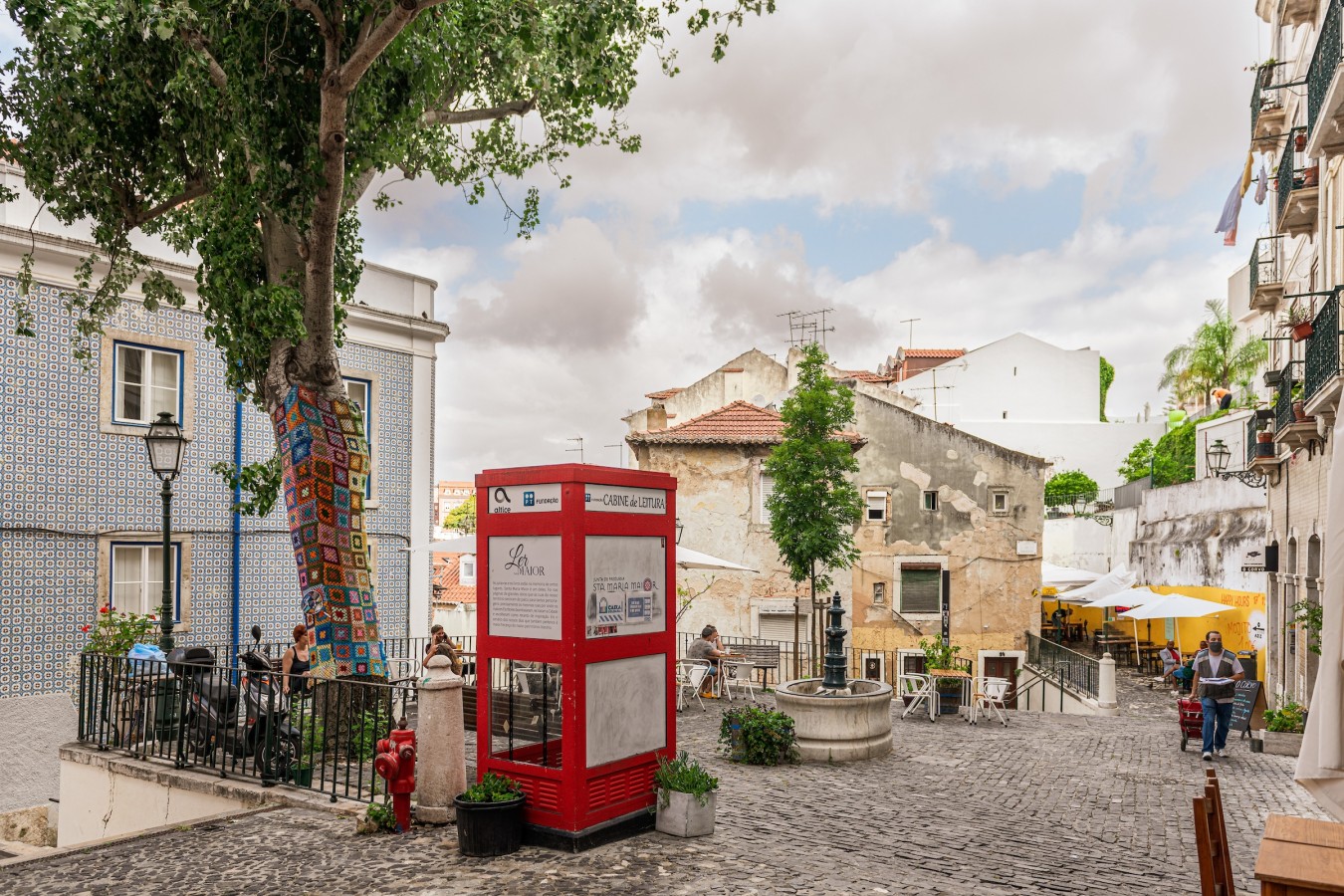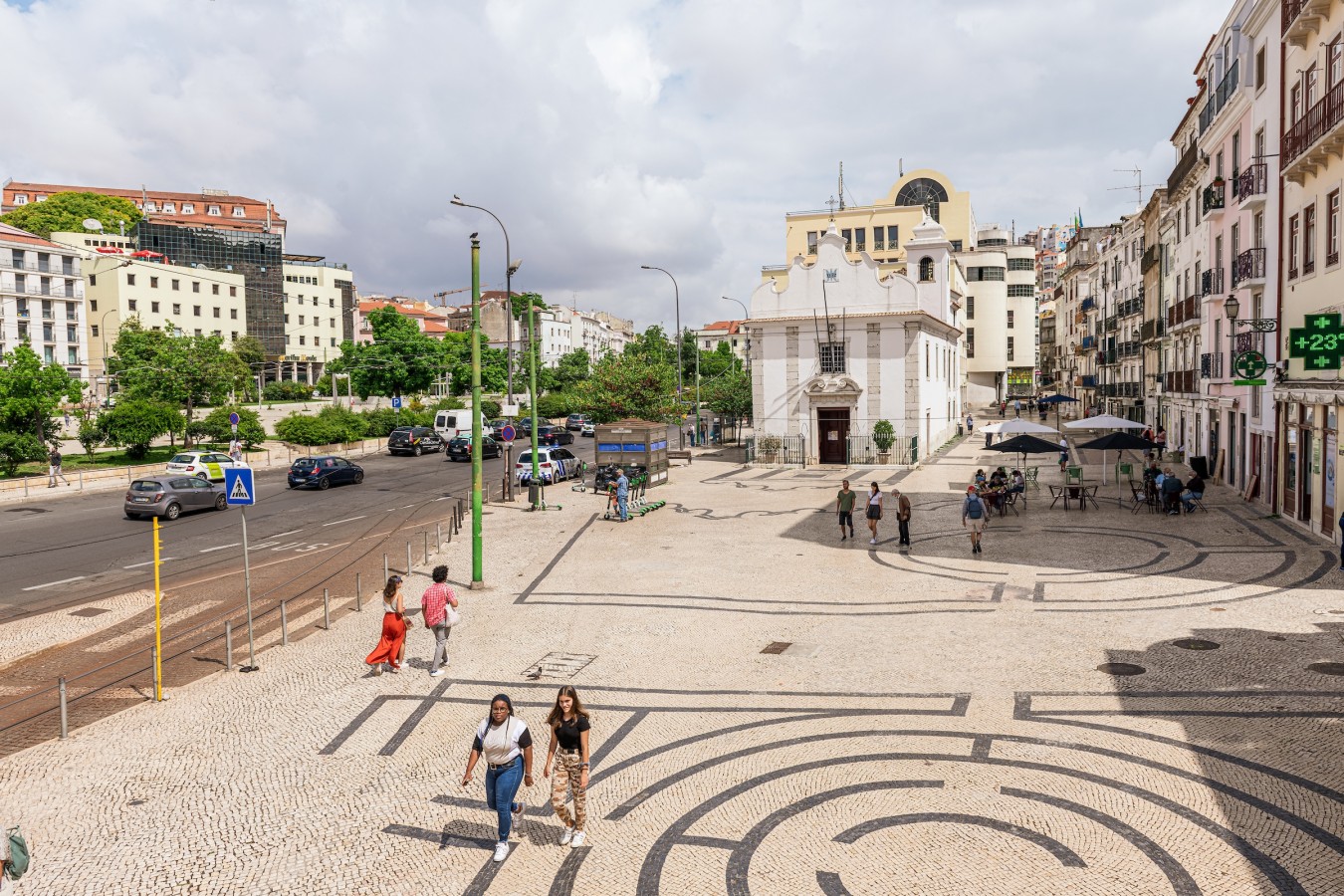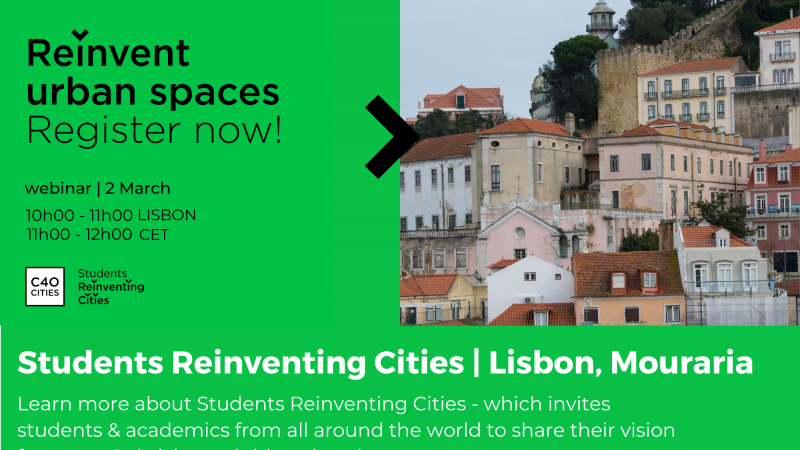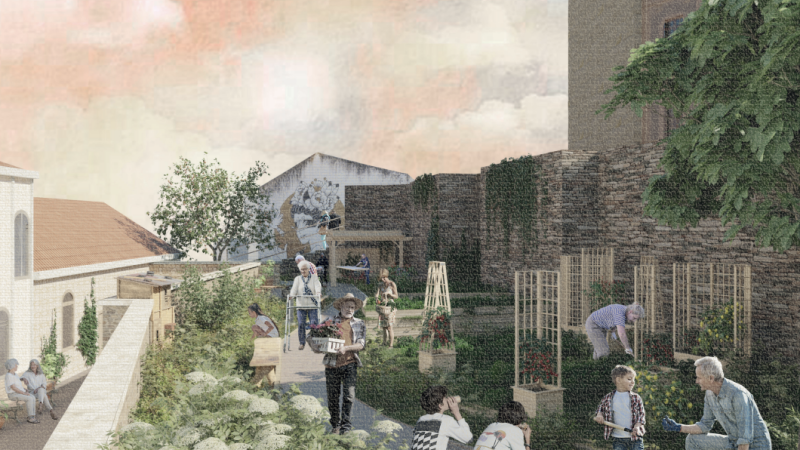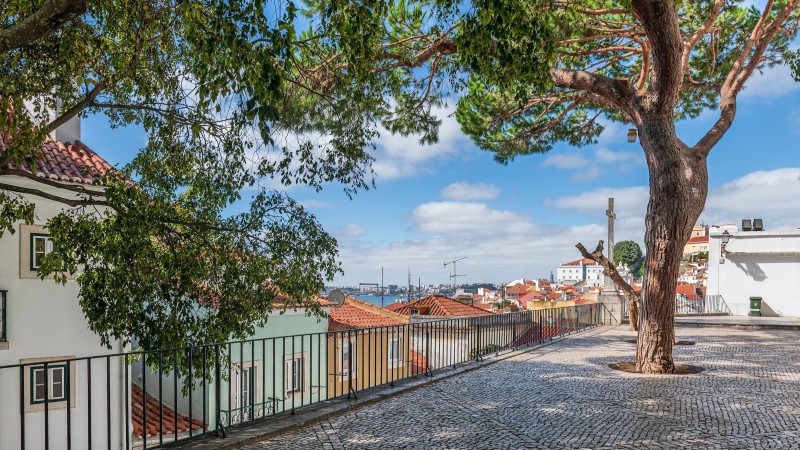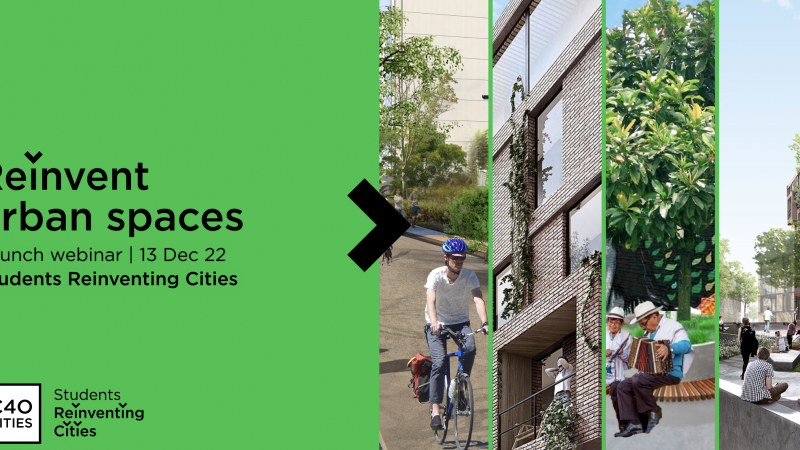Winning Team: Dreamers Inc.
Team members: Martyna Idasiak & Ralph Frühwirth | Lund University
External advisors: Andreas Olsson | Architect SAR/MSA
Connected neighbourhood
- Repurposing car parking spots into parklets with bicycle parking facilities and basic repair tools.
- Improving pedestrianisation and cyclability through new routes, and an integrated Tuk Tuk transport system.
- Improving microclimate through vertical greenery, railing vegetation on Mouraria’s many steps, and bioswales to boost water circularity.
Local neighbourhood
- Opening the currently enclosed brownfield sites to create a more uniform green & blue network in Mouraria.
- Repurposing underutilised buildings, such as the Largo da Rosa monastery and R. Damasceno Monteiro & Calçada car parks into mutli-functional spaces with solar panels and green roofs.
- These spaces provide senior housing, a kindergarten, affordable housing and an events space to foster intergenerational interaction and strengthen local community
- Creating an urban farm along Costa do Castelo to provide locally-sourced crops and an education facility for students. The farm is connected to the area’s circular system that uses water for non potable uses.
Special Mention Runner-up 2nd best project | Futuro Conectado
Team members: Mikaella Liveri, Cheyanne Seah ShiQi, Chloe Loh, Andria loannides, Eric Crowther, Ashil Shah & Samuel Tan Ming Ying | Imperial College London
Advisors: Professor Mike Cook & Dr Sunday Popo-Ola | Imperial College London
Special Mention 3rd Place | Tram for Transformation
Team members: Maria Stella Buoncompagno, Victória Miguel Rampazzo, Yilin Wang, Miguel Pereira Coutinho Relvas Pires, Nadia Zubair Khaleel & Tong Chi | Politecnico di Milano
Special Mention for Best Creative Concept | Baking Power
Team members: Tracy Saliba, Nagham El Hayek & Mohamad Abdulghani | Sapienza Università di Roma
Advisors: Professor Mosè Ricci | Sapienza Università di Roma
Special Mention for Best Co-creation | Aim Our Aura
Team members: Nicolás Pineda & Mariana Rosa | Universidade de Lisboa
The jurors that will assess all submitted projects include:
- Diana Henriques | Project Manager, Education for Sustainable Development, HUB-IN Lisboa team at Lisboa E-Nova -
- Susana Paulo | HUB-IN Lisboa team, Municipality of Lisbon - Innovation Department
- Dora Lampreia | HUB-IN Lisboa Stakeholder, Municipality of Lisbon - Urban Planning Department
- Costanza De Stefani | Reinventing Cities Project Manager, C40 Cities
- Ana Barbosa | Sustainability Manager, IKEA
- Rita Lopes | Researcher and HUB-IN Consortium Partner, NOVA University Lisbon
Colina do Castelo comprises seven neighbourhoods in the historic urban area of Lisbon. These areas give the city its unique identity, as they are linked with the original expansion of the city and its foundation.
This project will focus specifically on the area of Mouraria, one of the most multicultural neighbourhoods in Lisbon. Composed of narrow and sloping streets, it presents a diversity of buildings, featuring some of the oldest buildings in the city. Despite being the historical and cultural heart of the city, Colina do Castelo has been subject to an ever-increasing abandonment rate. Starting from the 60s, the population of the pilot plot area reduced by 56%. Simultaneously, there is a growing disparity between the young and the elderly, between locals and foreigners as well as workers and the unemployed.
To combat against these disparities and retain the identity of the neighbourhoods in this area, Colina do Castelo Hub is now being developed as part of the H2020 Project HUB-IN (Hubs of Innovation and Entrepreneurship for the Transformation of Historic Urban Areas), carried out in Lisbon by the Municipality and Lisboa E-Nova. This Hub strives to be a transformational engine for the sustainability and well-being of communities, by sharing and combining innovation and traditions, with a focus on sustainability. The overarching objective of this project is to combat the desertification of this historical area by promoting more circular neighbourhoods while preserving the identity and heritage. One of the main aims for Colina do Castelo Hub is to promote climate action, making it compatible with the cultural-led urban regeneration; creating better living conditions and comfort for local communities. The project should develop strategies to integrate nature-based solutions, improve the use of water resources and empower communities through culture to foster a more sustainable lifestyle.
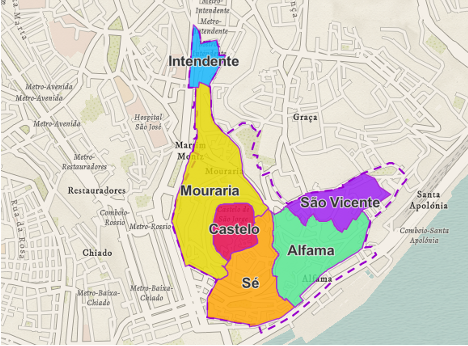
Approx. site area
21 hectares.
Key Information
Even though Colina do Castelo is the beating heart of the city, only 2.8% of the Lisbon population lives there, as a consequence of the high abandonment rate which started in the 60s.
Priority areas & main expectations
Students should develop a green and thriving neighbourhood preserving the history of the area, with a special focus on the following challenges:
a) Integrate nature-based solutions in outdoor spaces to reduce the Urban Heat Island (UHI) effect and the impact of heat waves;
b) Enhance water reuse and improve climate adaptation, promoting circularity; and
c) Empower local communities - using art as a vehicle for climate awareness and adopting a more sustainable lifestyle.


